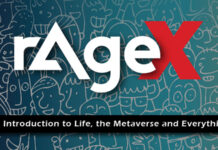Over the years, a lot of very smart people in marketing and communication have spoken about the importance of customer journeys. Whether it’s at conferences, in boardrooms, or in blogs and columns, they’ll typically also underline the importance of mapping the experience a customer goes through whenever they engage with the organisation.
The trouble is that the word journey suggests a linear progression from point A to point B. The customer starts with an online application and proceeds as predicated to the intended outcome. In truth, things are seldom that simple.
Because customers are human, they don’t adhere to linear journeys. Instead, they go on tangents, make mistakes, take breaks from a process, get frustrated, abandon whatever they were trying to do, change channels – all of which means they don’t progress through a planned A to B journey.
The trouble with linear journey mapping
And that’s not the only problem with linear journey mapping. While customer experience teams can set up specific journeys for their customers, doing so means losing out on customised journeys. Each individual interaction offers a multitude of possible directions, making the visualisation of an engagement process more of a spider’s web of potential journeys. Moreover, mapped out journeys, therefore, lead to experiences that are misaligned and organised around the needs of the business.
Think about it. If you’re an insurance customer who’s trying to take out a new policy, would you rather your provider forced you to go from their app or website to email, or that it allowed you to complete the process on whichever channel you choose? The organisation might prefer the former, but for most customers, it’s a no-brainer, especially if the organisation provides a consistent experience across all channels.
We all have individual preferences and ways of operating. Most people are likely to be more predisposed to any organisation that meets those needs. Certainly, an organisation might feel like it has a greater degree of control if it has set journeys mapped out, but it’s ultimately limiting itself by taking that approach.
Orchestration and individuality
But if we accept that linear journey mapping is dead, what approach should organisations take when it comes to ensuring that their customers have the best possible journey and experience? The answer is to take an approach that centres on orchestration and intelligent orchestration in particular.
Intelligent orchestration means the system improves its ability with each additional data point and makes increasingly intelligent decisions. Across all your channels (call centre, social media, communication), the system makes a decision on the next best step to send the right message on the right channel, at the right time.
It’s able to do so because of artificial intelligence executing algorithms to make decisions based on masses of data. But how does the system know who’s engaging?
There are a couple of ways it can do so:
- When a person is identified as part of the engagement (authenticated, logged in), the system adds the engagement information to the known identity.
- When the person is not identified (browsing a website), the system looks for similarities or unique identifiers (such as IP address) and based on the data on hand, resolves the identity of the person in order to continue building on that identity.
Better end-to-end experiences
Taking this approach allows organisations to provide better end-to-end experiences for their customers. That, in turn, engenders more loyalty and ultimately supports business growth.
The benefits of an orchestrated approach don’t stop there either. It also allows the organisation to look at the entire lifecycle, across all of its departments. This brings with it a number of commercial benefits, from reduced ‘cost to serve’, to employee engagement. Finally, an orchestrated approach provides the means to iron out customer journey hotspots across all your channels.
With all those benefits, it’s clear that linear journey mapping is dead. Long live intelligent orchestration.




















































































